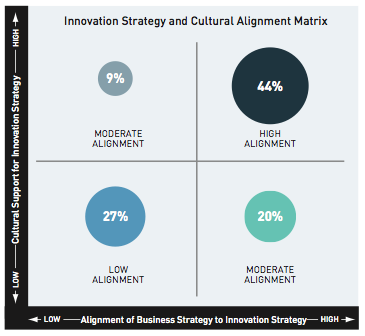Das
JamCamp 2011 glich –
im Vergleich zum letzten Jahr– mehr einem klassischen Businessevent denn einem Barcamp. Eine Konzeptänderung? Nicht unbedingt. Das Vorspiel blieb gleich. Der
IBM Bus tourte wieder 14 Tage mit Bloggern und Vordenkern eine Woche durch Deutschland, um die Mission „Social Business“ zu einer Vision für zahlreiche Unternehmen werden zu lassen.
Wo auf dem letztjährigen Jamcamp noch interaktiv über Vorträge abgestimmt wurde, gab es 2011 ein volles Programm aus Keynote Präsentationen und Parallelvorträgen. Der Open Space Vortragsbereich fristete einem „Abseitsdasein“. Einige Präsentationen taten es in diesem Bereich dem leider qualitativ gleich – laut diverser Teilnehmer.
Dass Event nach Frankfurt zu verlegen, um es der IBM Heimat und dessen Einfluss zu entziehen, kann ich verstehen. Will man es doch dem IBM Business Modell Touch entziehen. Es wird sich im nächste Jahr zeigen, inwieweit man das Konzept von starken IBM Talk lösen kann und will. Der inhaltlichen Entfaltung der Thematik würde es sicher gut tun, andere Social Business Player noch mit aufzunehmen.
Als ich am Frankfurt Fernbahnhof ankam, machte ich zufällig die Bekanntschaft eines leitenden Consultant eines Flugkonzerns. Er hatte sich erstmalig zu einem Jamcamp aufgemacht, da der „Social Trend“ vermutlich nicht halt machen werde vor dem Business. So seine Worte. Wie recht er hat. Seine Erwartungen waren entsprechend hoch.
Inhaltlich bot das Jamcamp alle notwendigen Themen und Gedankenansätze, die das Thema Social Business in sich trägt – technologisch, personalpolitisch, wirtschaftlich, zukunftsorientiert. Der “neumodische” Arbeitsalltag mit Cloud Computing, Mobilität und “Always on” wurde auf unterschiedlichste Art und Weise beleuchtet, aber immer mit dem Fokus des Business Mehrwertes, und meist realistisch.
Nachdenkenswerter Leitsatz für mich war: „Kultur schlägt Strategie!“ Das liefert virtuellen Raum für Interpretation, Illustration und Kreativität. Auch wenn die Aussage „Bringt Zeit und Geduld mit bei der Umsetzung und Implementierung“ faktisch viele Falten auf die Stirn zauberte. Vor allem bei jenen, die in Excel Sheets die Integration von Social Business in die Planung des nächsten Geschäftsjahres einbringen wollten.
Persönlich stelle ich fest, dass die Beurteilung von Vorträgen für mich immer schwerer wird, da man irgendwie an der Spitze der Trends, neuen Tools und Entwicklung des Social Web knabbert. Dass Vorträge von
Prof. Gunter Dück,
Uwe Hauck und
Cordelia Krooß ansprachen, mag hierfür ein Beleg sein. Sie treffen sich inhaltlich mit einigen meiner Aussagen.
Konzepte wie „Buy my skills!“ (Niemeyer Definition) oder „Buy my brain!“ (Meyer-Gossner Definition) werden sicherlich so manchem Personaler noch als bittere Pille im Hals stecken bleiben auf dem Weg zu mehr Flexibilität und einem möglichen Zweitengagement eigener oder „eingekaufter Mitarbeiter“ in der Zukunft. Kann zum Problem werden oder eine moderne Chance der Wissenserweiterung im Unternehmen darstellen. Alles eine Frage des Weitblicks und eines möglichen Kulturwandels im Unternehmen.
Was der Flugkonzern Manager am Schluss meinte…? Er war begeistert von der Veranstaltung, von den Inhalten, von den Ansätzen des Umdenkens. Manchmal würde man sich wünschen, es wären mehr Manager und C-Level Verantwortliche bereit, ein oder zwei Tage zu investieren, um einen Blick in die Zukunft des modernen Arbeitsplatzes zu werfen. Ob sie im nächsten Jahr kommen…? Wir werden sehen. Auf jeden Fall wünsche ich es dem Team um Stefan Pfeiffer, das das JamCamp toll organisiert haben.
Spot On!
Auf dem Jamcamp habe ich nach „Personal und Employer Branding“ im letzten Jahr dieses Jahr das Konzept der
„Community Centric Strategy“ (siehe
Video) gelauncht. Es war einerseits ein
„Plädoyer“ für den Kunden im Mittelpunkt der Webstrategie. Aber auch ein neues Beratungsmodell der neu gegründeten
The Strategy Web GmbH. Andererseits war es aber ein
Wachrüttler für Unternehmen hin zur Konversation mit dem Kunden.
Wenn Unternehmen nicht verstehen, wer sie füttert, werden sie verhungern. Oder sie machen den Mitbewerb fett machen. Im Moment definieren Unternehmen ihre Kunden immer noch als Ziele und nicht als Community Center, die den organischen Wachstum nähren. Es wird spannend sein, wie Unternehmen diese Herausforderung füttern. Das Feedback auf das Strategiemodell war auf jeden Fall
positiv und wird auch bald als Webseite gelauncht. Ich freue mich auf euer Feedback und die Zukunft im Social Business.
CU at Jamcamp 2012!




 With over 350 million active mobile users across 475 wireless operators worldwide on Facebook’s mobile sites, marketers wonder which tactics they should be using to generate higher engagement levels. But also Facebook’s new iPad app and their mobile site shows that also Facebook knows about the value mobile offers to their business.
With over 350 million active mobile users across 475 wireless operators worldwide on Facebook’s mobile sites, marketers wonder which tactics they should be using to generate higher engagement levels. But also Facebook’s new iPad app and their mobile site shows that also Facebook knows about the value mobile offers to their business. Moreover, about the same proportion say their innovation strategy is inadequately aligned with their overall corporate strategy. And although entire industries, such as pharmaceuticals, continue to devote relatively large shares of their resources to innovation, the results are much less successful than they and their stakeholders might hope for.
Moreover, about the same proportion say their innovation strategy is inadequately aligned with their overall corporate strategy. And although entire industries, such as pharmaceuticals, continue to devote relatively large shares of their resources to innovation, the results are much less successful than they and their stakeholders might hope for.
